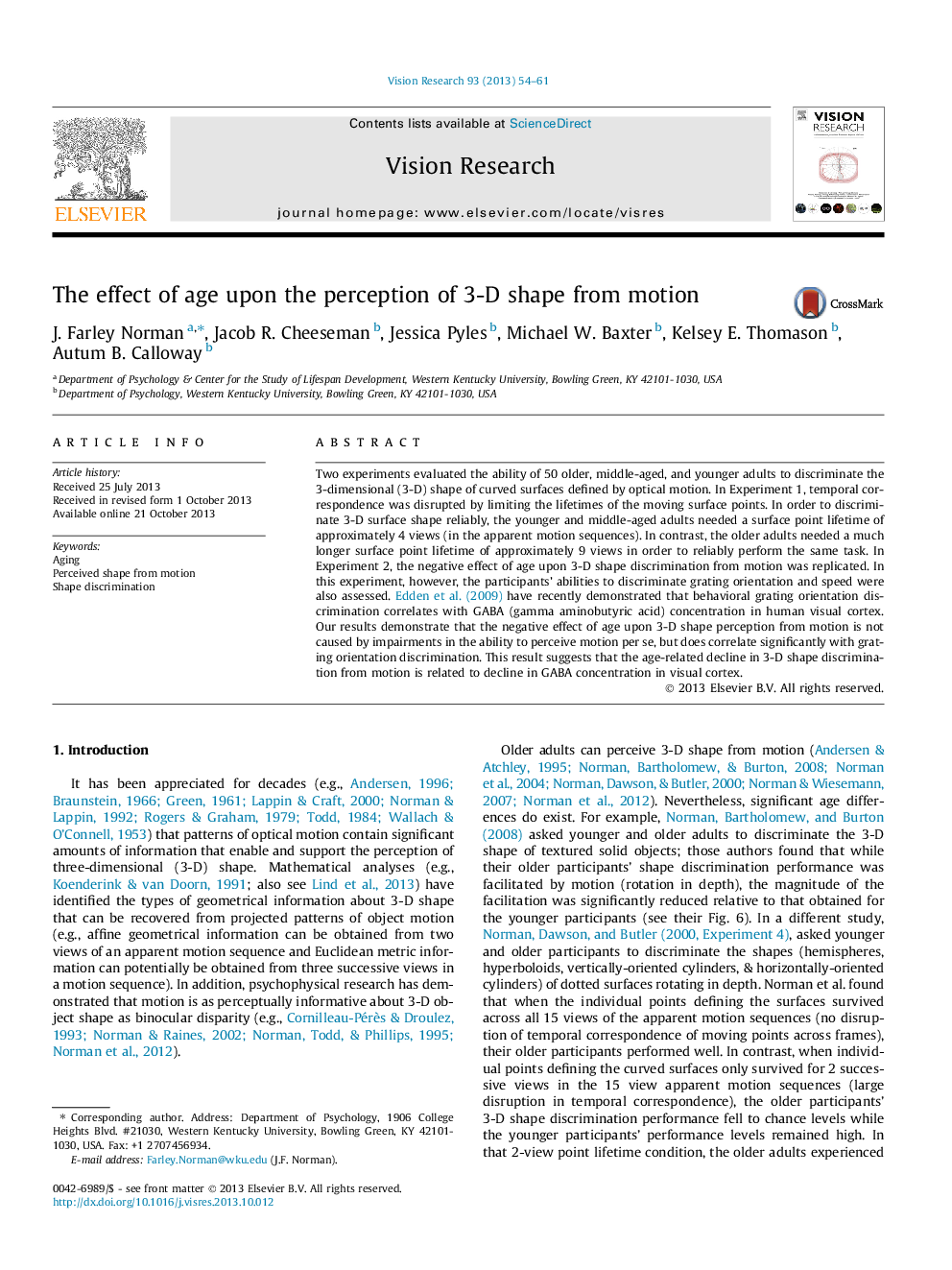| Article ID | Journal | Published Year | Pages | File Type |
|---|---|---|---|---|
| 6203528 | Vision Research | 2013 | 8 Pages |
â¢We evaluated the effects of aging upon the ability to perceive 3-D shape from motion.â¢Older adults were less able to judge shape when temporal correspondence was reduced.â¢Middle-aged adults' performance was as high as that of younger adults.â¢Participants' shape discrimination abilities are apparently related to GABA concentration in V1.
Two experiments evaluated the ability of 50 older, middle-aged, and younger adults to discriminate the 3-dimensional (3-D) shape of curved surfaces defined by optical motion. In Experiment 1, temporal correspondence was disrupted by limiting the lifetimes of the moving surface points. In order to discriminate 3-D surface shape reliably, the younger and middle-aged adults needed a surface point lifetime of approximately 4 views (in the apparent motion sequences). In contrast, the older adults needed a much longer surface point lifetime of approximately 9 views in order to reliably perform the same task. In Experiment 2, the negative effect of age upon 3-D shape discrimination from motion was replicated. In this experiment, however, the participants' abilities to discriminate grating orientation and speed were also assessed. Edden et al. (2009) have recently demonstrated that behavioral grating orientation discrimination correlates with GABA (gamma aminobutyric acid) concentration in human visual cortex. Our results demonstrate that the negative effect of age upon 3-D shape perception from motion is not caused by impairments in the ability to perceive motion per se, but does correlate significantly with grating orientation discrimination. This result suggests that the age-related decline in 3-D shape discrimination from motion is related to decline in GABA concentration in visual cortex.
